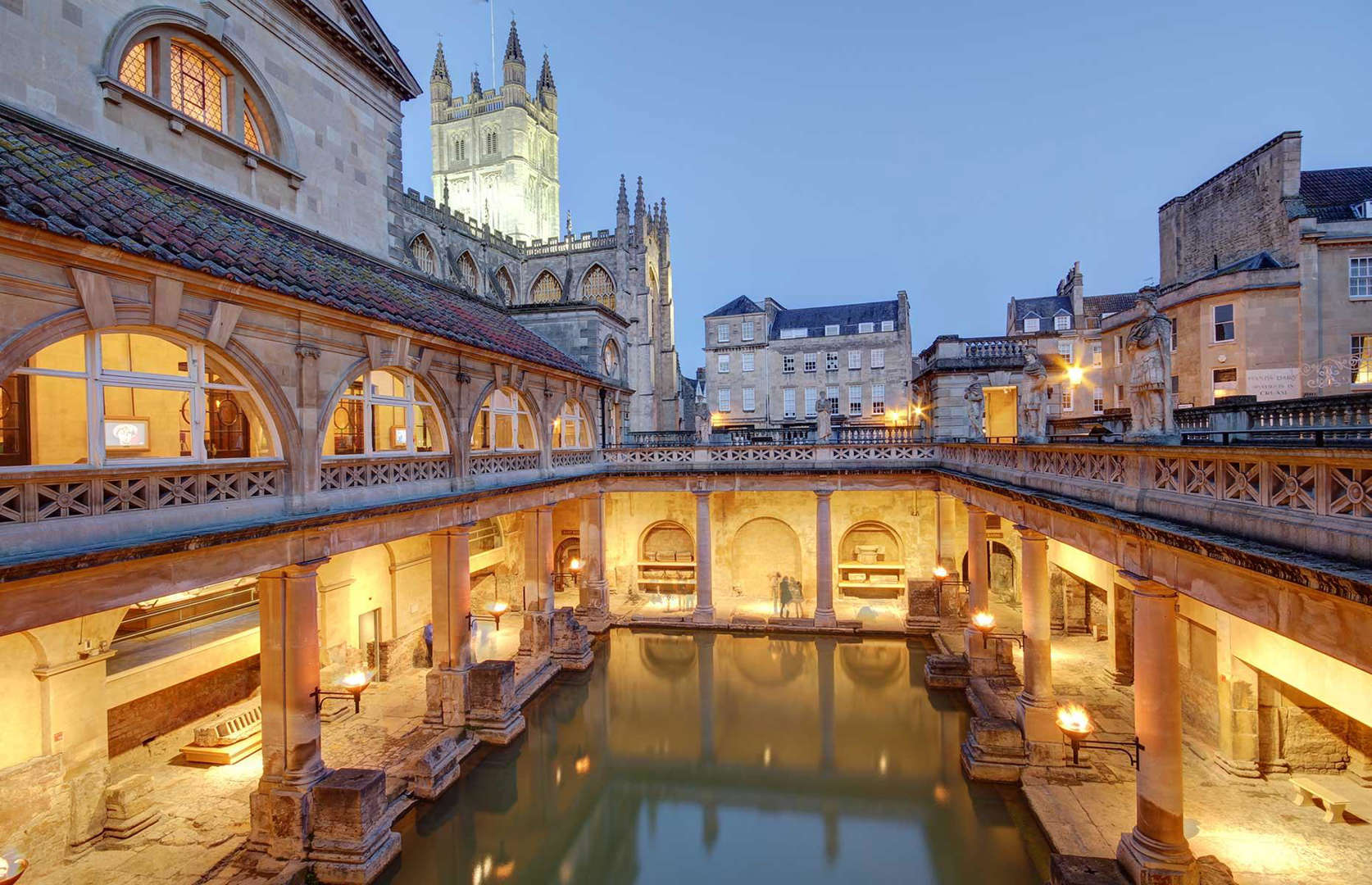
1. Pompeii, Italy
Location: Near Naples, Campania, Southern Italy
Why Visit: Frozen in time by the catastrophic eruption of Mount Vesuvius in AD 79, Pompeii is perhaps the most iconic Roman city preserved under volcanic ash. Streets, shops, villas, frescoes, plaster casts of victims — all vividly remain to tell the story of daily Roman life abruptly ended.
Highlights:
-
The Forum: central meeting place for commerce & politics
-
Villa of the Mysteries: known for its frescoes
-
The Baths and the amphitheatre: great examples of public & entertainment architecture
Best Time to Visit: Spring or autumn, to avoid summer crowds. Note recent management changes: there are visitor limits per day to help preserve the site.
2. Ephesus, Turkey
Location: Near Selçuk, İzmir Province, Western Turkey
Why Visit: One of the best‑preserved Roman cities in Asia Minor, combining Greek, Roman and later Christian history. The sheer scale of its theatres, libraries, grand colonnaded streets, and baths makes it a visual and cultural treat.
Highlights:
-
Library of Celsus: striking façade, beautifully restored Great Theatre: capacity for 25,000 people, still in use for occasional performances
-
Terrace Houses: well‑preserved Roman houses with mosaics and frescoes giving insight into upper‑class lifestyle
How to Reach: By road or rail to Selçuk; well connected via İzmir. There are guided walks and info boards.
3. Timgad, Algeria
Location: Batna Province, Northern Algeria, about 35 km east of Batna. In the Aurès Mountains region.
Why Visit: Known as “the Pompeii of Africa”, Timgad is a remarkably preserved example of Roman urban planning, especially its grid layout (cardo & decumanus), public baths, temples, a triumphal arch, market, and residential zones. It illustrates how the Romans organized colonial towns on remote frontiers.
Highlights:
-
Arch of Trajan: an impressive monumental gate marking the western entrance.
-
Public baths: multiple thermae and ruins showing how important hygiene, leisure and social gathering were.
-
Ruins of the forum, temples & rich private mosaics in houses.
4. Jerash, Jordan
Location: Northern Jordan, about 48 km north of Amman.
Why Visit: Often called the “Pompeii of the East,” Jerash preserves the grandeur of Roman architecture in the Middle East. It was a vital city in the Roman Decapolis and has theatrical, religious, and civic structures largely intact.
Highlights:
-
The Oval Plaza (Forum): enclosed by columns.
-
Arch of Hadrian: grand city gate.
-
South Theatre: large and well preserved.
Visitor Tips: Combine with nearby Amman; early morning or late afternoon visits are best for light and avoiding heat.
5. The Amphitheatre of El Jem, Tunisia
Location: El Djem (Thysdrus), in Mahdia Governorate, central east Tunisia.
Why Visit: One of the best‐preserved Roman amphitheatres outside Italy. Massive in scale, with a capacity for ~35,000 spectators, it once hosted gladiatorial games, public spectacles and more.
Highlights:
-
The structure itself: its enormous oval, multi‑tiered design.
-
Great acoustics and architectural beauty even with missing parts.
-
Museum adjacent, showcasing artifacts and context.
6. Hadrian’s Villa (Villa Adriana), Italy
Location: Tivoli, Lazio, near Rome.
Why Visit: Built by Emperor Hadrian around AD 120, the villa complex is enormous and architecturally inventive. It includes palaces, baths, theatres, extensive gardens, artificial ponds, fountains and terraces. It displays engineering skill and artistic ambition.
Highlights:
-
Canopus & the large water basin, inspired by Egyptian design.
-
Cento Camerelle: underground chambers.
-
Beautiful mosaics and statuary remains.
Other Notable Mentions
-
Baths of Antoninus (Carthage, Tunisia): largest Roman baths in Africa (outside of Italy) that remain.
-
Salona (Croatia): once the capital of Roman Dalmatia, with theatre, forum, aqueducts. Located near modern Solin.
-
Domus Romana (Malta): a Roman aristocratic townhouse with exquisite mosaics and artifacts.
-
Herculaneum (Italy): like Pompeii but better preserved in many organic materials (wood, food etc.) because it was buried under pyroclastic material.
Things Every Tourist Should Know
To make the most of your visit to Roman ruins, keep these tips in mind:
-
Timing & Weather: Early morning or late afternoon are best. Summers can be scorching, especially in North Africa or the Middle East. Rainy seasons may make walking uneven surfaces slippery.
-
Wear Comfortable Footwear: Many ruins have stone paving, uneven ground, steep steps, and sometimes areas with little shade. Good walking shoes are essential.
-
Guides & Tours: Hiring a local guide or joining a small guided tour provides context — stories, architecture, insight that you won’t get just by looking. Also helps with navigating large sites.
-
Preservation Rules: Many sites have restrictions — no climbing on ruins, no touching fragile frescoes, no flash photography in certain areas. Respect signs and rules, both for your safety and preservation of heritage.
-
What to Bring: Water bottle, sun protection (hat, sunscreen), camera, light snack. Some sites have cafés; many don’t. Also, have local currency for entrance fees, guides, transport.
-
Open & Access Info: Check in advance opening hours, ticketing rules, day‑pass limits. Some sites (like Pompeii) have introduced daily visitor caps and timed tickets
Why These Sites Are So Captivating
-
Authenticity: Many have been buried, abandoned, or covered and then uncovered, which helps preserve frescoes, mosaics, even organic materials (like in Herculaneum).
-
Architectural Innovation: Romans perfected things: aqueducts, amphitheatres, road networks, bath complexes, forums etc. These sites allow us to observe how architecture met public, religious, private and military needs.
-
Cultural Layers: In many places, you see not just Roman features but later additions (Byzantine, early Christian, Ottoman etc.) — giving sense of continuity and change. Ephesus and Jerash are good examples.
-
Landscape & Setting: Many ruins are striking because of their surroundings — sea coasts, mountains, desert plateaux. Timgad in the highlands of Algeria, El Jem in Tunisia, Pompeii with Mt Vesuvius, Ephesus near the coast.

You must be logged in to post a comment.